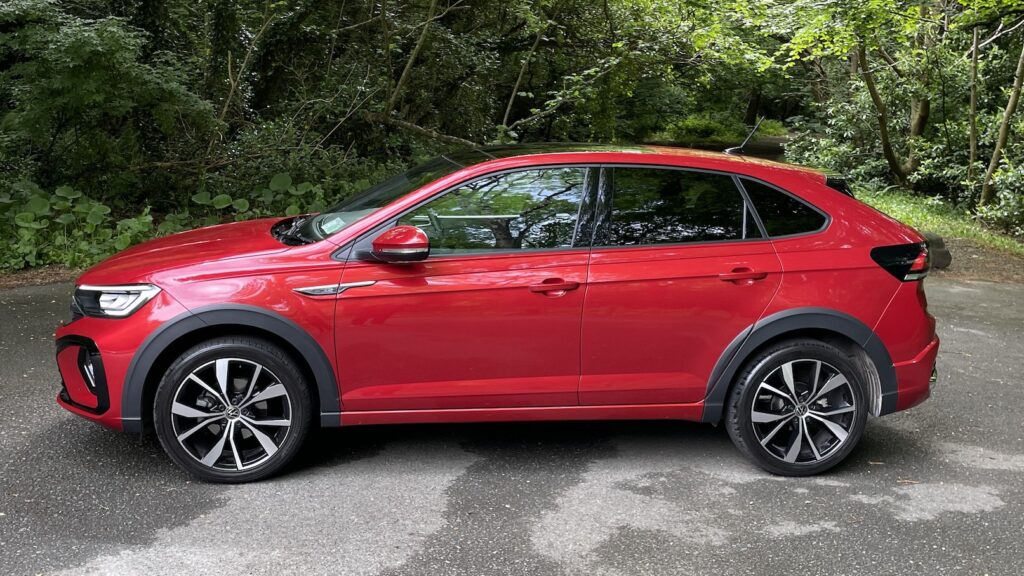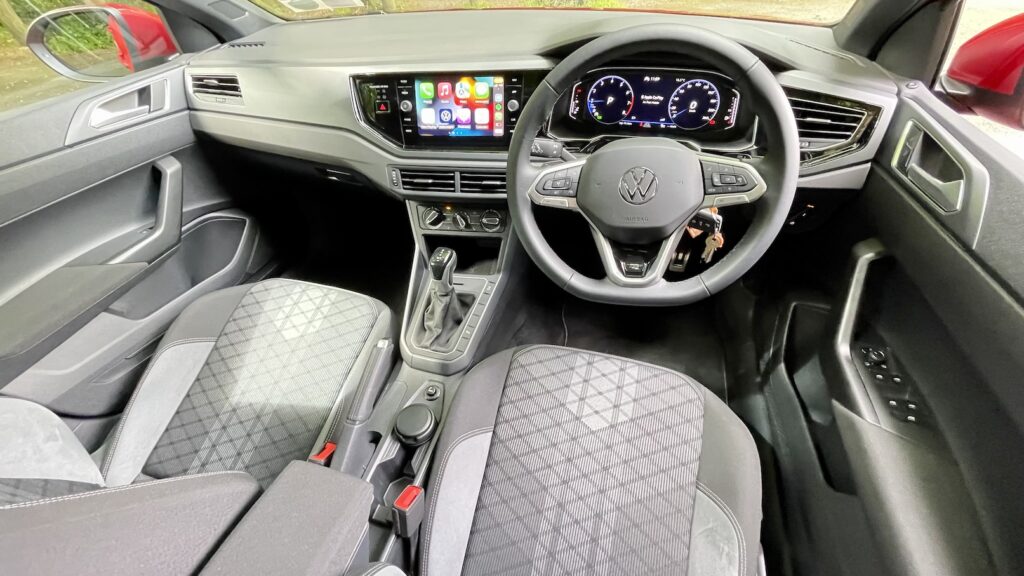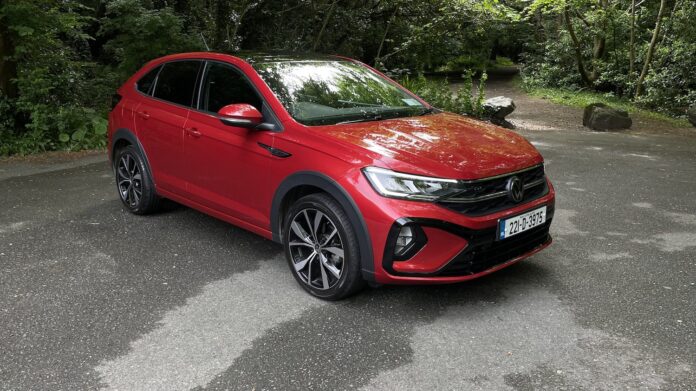01/07/2022 The VW Taigo looks great, with crossover styling and a nice stance on the road especially in R Line trim. Sandwiched between the T-Cross and T-Roc the Taigo is a new niche model that nobody in Europe was asking for. That said it does look nice and is quite compact, speaking of compact its price from €27,745 isn’t! We’re putting the new Volkswagen Taigo through its paces to see if it is worth it?

The Taigo is VW’s SUV/Crossover entry price point with the T-Cross costing less than €1,000 more. The similar sized T-Roc has just received a facelift and starts at €31,705. The Taigo on test is quite striking from most angles especially in R Line trim. Built on the MQB-AO modular platform (VW Group’s smallest) the new Taigo is slightly longer than a T-Roc at 4,271mm (+35mm) and its 203mm longer than a VW Polo with a slightly wider track 1757mm (+6mm). Due to its low roofline and stance you’d be forgiven for thinking it was longer than a VW Golf but it is in fact shorter by 13mm. Nice bodywork design creases and lines can be seen everywhere, even the rear design looks well-resolved with a full width light bar to add a touch of premium feel. Perhaps this is the last new VW that will feature faux quad exhaust pipes (in this day and age of emissions awareness any homage to combustion power is so wrong yet still so right!). The Taigo has a great stance with its width exaggerated by the wide split grille and nice light clusters. The Taigo’s large looking wheel arches are an optical trick using contrasting black plastic/trim to deliver a robust SUV crossover style. Does the car deliver enough in the style department to merit its price… that’s the big question.

Under the bonnet all Taigos come with a three cylinder 1 litre ‘TSI’ petrol engine that pushes out 110hp. Manual and auto DSG (plus roughly €3,000) versions are available. Fuel consumption averages in the mid 5s to 5.9 litres (auto) per 100km. Emissions range from 124-135g/km CO2. On the road our front-wheel drive automatic (7-speed DSG) test car was nice to drive but in no way exciting. The relatively weighty small car coped with motorway and urban settings, displaying no real vices… a nice way of saying it is quite dull to drive (perfectly fine for most buyers). When power was needed the Taigo would do an adequate job of going a little faster without any of that neck snapping EV acceleration we’re getting used to.

Three grades are available: Life, Style (from €30,570) and R Line (from €31,850). Our range topping R Line, while well equipped as standard had a few optional extras like a large tilt and slide sunroof, but it weighed in at a whopping €40,515… a VW Tiquan PHEV is only €39,125 while the urban friendly Polo starts from just €22,770. Even a Golf seems cheap starting at €30,000. Direct Taigo rivals include the excellent Ford Puma, Peugeot 2008 and Mazda CX-3 to name some of our favourites. The Taigo’s exciting exterior is the high point, once you get in, it soon becomes just another average car from there. Michael Sheridan




